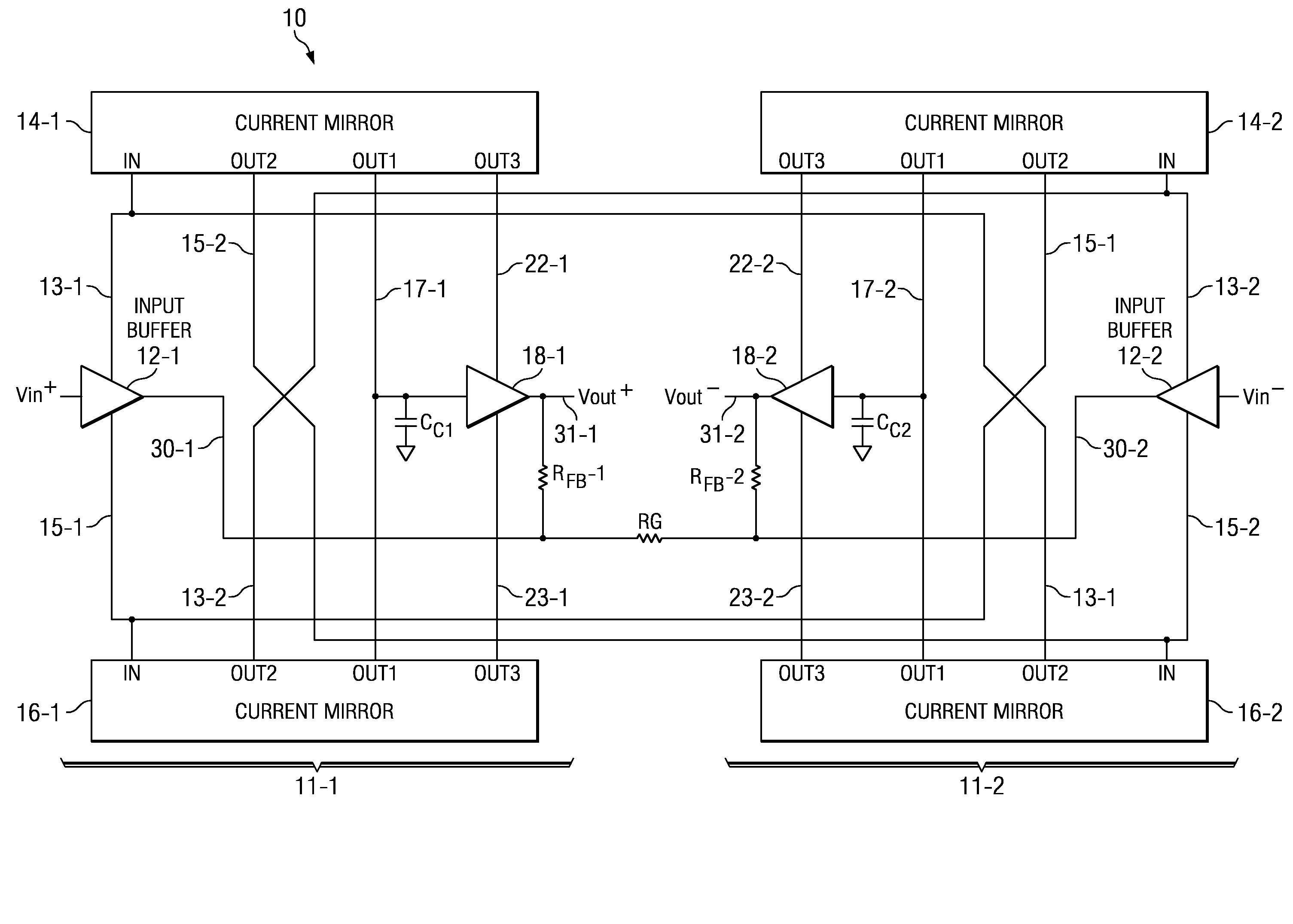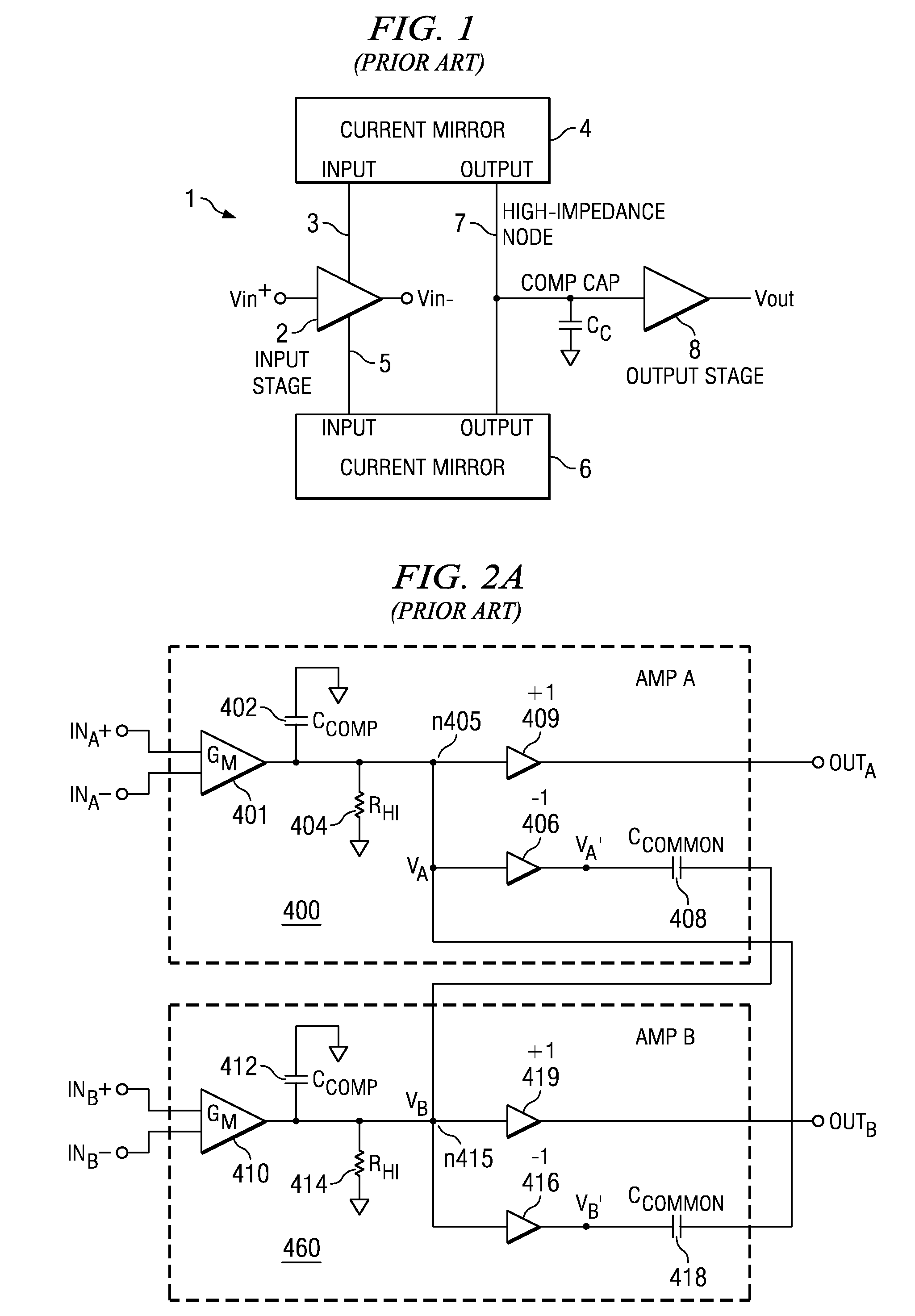Common-mode bandwidth reduction circuit and method for differential applications
a common-mode bandwidth and reduction circuit technology, applied in the direction of dc-amplifiers with dc-coupled stages, dc-amplifiers with semiconductor devices/discharge tubes, differential amplifiers, etc., can solve the problems of severe differential amplifier driver circuit problems, differential amplifier driver circuits susceptible to common-mode instability, individual amplifiers and hence differential amplifier driver circuits that are composed thereof, etc., to avoid instability in response and achieve higher full power bandwidth
- Summary
- Abstract
- Description
- Claims
- Application Information
AI Technical Summary
Benefits of technology
Problems solved by technology
Method used
Image
Examples
Embodiment Construction
[0042]A proposed solution to the previously mentioned common mode instability problem in amplifier driver circuits is shown in FIG. 3. The typical current mirrors with one input and one output are replaced with current mirrors having one input and at least 2 outputs. The first outputs (OUT1) of each current feedback amplifier are connected together to form the high impedance node, which is the same as in a typical CFA. The second outputs (OUT2) of each current feedback amplifier, on the other hand, are connected to the opposite current mirror inputs of the complementary amplifier. These additional current mirror outputs function differently in relation to common mode and differential mode signals.
[0043]For differential mode signals, the voltage on the input of each current feedback amplifier is 180° out of phase with the voltage on the input of the other current feedback amplifier. Here the additional current mirror outputs in each current feedback amplifier will function symbiotica...
PUM
 Login to View More
Login to View More Abstract
Description
Claims
Application Information
 Login to View More
Login to View More - R&D
- Intellectual Property
- Life Sciences
- Materials
- Tech Scout
- Unparalleled Data Quality
- Higher Quality Content
- 60% Fewer Hallucinations
Browse by: Latest US Patents, China's latest patents, Technical Efficacy Thesaurus, Application Domain, Technology Topic, Popular Technical Reports.
© 2025 PatSnap. All rights reserved.Legal|Privacy policy|Modern Slavery Act Transparency Statement|Sitemap|About US| Contact US: help@patsnap.com



